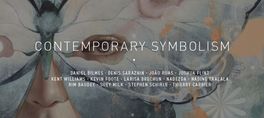Though the Swiss-born Rudolf de Crignis (1948–2006) suffered an untimely death at the age of fifty-eight, the artist left behind a large and magnificent body of work, including a vast collection of the meditative paintings for which he is renowned. He began his career as a performance and video artist, but a series of trips to New York in the early 1980s forever changed the course of his pursuits. Exhilarated by the Minimalist abstract works of Ad Reinhardt, Brice Marden, Blinky Palermo, Robert Ryman, and Agnes Martin he saw there, de Crignis made New York his primary residence in 1985, and soon began producing a series of seemingly monochromatic paintings that explore relationships among color, light, space, and viewer.
The University of California, Berkeley Art Museum and Pacific Film Archive (BAM/PFA) presentation of Rudolf de Crignis / MATRIX 245 is the artist’s first solo museum exhibition in the United States. The show brings together fourteen of the artist’s signature blue-and-gray oil paintings, as well as eight graphite works on paper, produced between 1991 and 2006. At first viewing, de Crignis’s paintings appear to be deeply saturated monochromes, but then they reveal themselves to be the result of layers upon layers of thin oil washes (sometimes as many as forty) with resonant tints of other hues. His exquisitely blue-and-gray paintings—no two alike—actually comprise an array of pigments—including ultramarine, cobalt blue, royal blue, Scheveningen Warm Gray, and Persian red. Displayed in natural light, the works are exercises in slow looking, unfolding as one views them from different vantage points. In his studio, de Crignis would often move his paintings from one wall to the next to capture the shifting light.
While de Crignis’s oil paintings are the end result of a slow accumulation of materials, his delicate works on paper, which he called “paintings” are the culmination of a process of reduction. Using hard pencils, de Crignis covered the paper with horizontal and vertical lines, then erased them—a process that he repeated several times with each work. The partially erased graphite lines create a slight vibration, an optical pulse that can resemble the brushwork in his canvas works.
In 2005 de Crignis wrote about his paintings as works in progress, one decision leading to the next without a preordained plan. Above all, though, his goal was for his painting to be perceived as an experience. As Ken Johnson of the New York Times wrote, “At once formally severe and materially luxurious, Mr. de Crignis's paintings bridge the gap between the perceptual and the transcendental.”
show less
The University of California, Berkeley Art Museum and Pacific Film Archive (BAM/PFA) presentation of Rudolf de Crignis / MATRIX 245 is the artist’s first solo museum exhibition in the United States. The show brings together fourteen of the artist’s signature blue-and-gray oil paintings, as well as eight graphite works on paper, produced between 1991 and 2006. At first viewing, de Crignis’s paintings appear to be deeply saturated monochromes, but then they reveal themselves to be the result of layers upon layers of thin oil washes (sometimes as many as forty) with resonant tints of other hues. His exquisitely blue-and-gray paintings—no two alike—actually comprise an array of pigments—including ultramarine, cobalt blue, royal blue, Scheveningen Warm Gray, and Persian red. Displayed in natural light, the works are exercises in slow looking, unfolding as one views them from different vantage points. In his studio, de Crignis would often move his paintings from one wall to the next to capture the shifting light.
While de Crignis’s oil paintings are the end result of a slow accumulation of materials, his delicate works on paper, which he called “paintings” are the culmination of a process of reduction. Using hard pencils, de Crignis covered the paper with horizontal and vertical lines, then erased them—a process that he repeated several times with each work. The partially erased graphite lines create a slight vibration, an optical pulse that can resemble the brushwork in his canvas works.
In 2005 de Crignis wrote about his paintings as works in progress, one decision leading to the next without a preordained plan. Above all, though, his goal was for his painting to be perceived as an experience. As Ken Johnson of the New York Times wrote, “At once formally severe and materially luxurious, Mr. de Crignis's paintings bridge the gap between the perceptual and the transcendental.”
Though the Swiss-born Rudolf de Crignis (1948–2006) suffered an untimely death at the age of fifty-eight, the artist left behind a large and magnificent body of work, including a vast collection of the meditative paintings for which he is renowned. He began his career as a performance and video artist, but a series of trips to New York in the early 1980s forever changed the course of his pursuits. Exhilarated by the Minimalist abstract works of Ad Reinhardt, Brice Marden, Blinky Palermo, Robert Ryman, and Agnes Martin he saw there, de Crignis made New York his primary residence in 1985, and soon began producing a series of seemingly monochromatic paintings that explore relationships among color, light, space, and viewer.
The University of California, Berkeley Art Museum and Pacific Film Archive (BAM/PFA) presentation of Rudolf de Crignis / MATRIX 245 is the artist’s first solo museum exhibition in the United States. The show brings together fourteen of the artist’s signature blue-and-gray oil paintings, as well as eight graphite works on paper, produced between 1991 and 2006. At first viewing, de Crignis’s paintings appear to be deeply saturated monochromes, but then they reveal themselves to be the result of layers upon layers of thin oil washes (sometimes as many as forty) with resonant tints of other hues. His exquisitely blue-and-gray paintings—no two alike—actually comprise an array of pigments—including ultramarine, cobalt blue, royal blue, Scheveningen Warm Gray, and Persian red. Displayed in natural light, the works are exercises in slow looking, unfolding as one views them from different vantage points. In his studio, de Crignis would often move his paintings from one wall to the next to capture the shifting light.
While de Crignis’s oil paintings are the end result of a slow accumulation of materials, his delicate works on paper, which he called “paintings” are the culmination of a process of reduction. Using hard pencils, de Crignis covered the paper with horizontal and vertical lines, then erased them—a process that he repeated several times with each work. The partially erased graphite lines create a slight vibration, an optical pulse that can resemble the brushwork in his canvas works.
In 2005 de Crignis wrote about his paintings as works in progress, one decision leading to the next without a preordained plan. Above all, though, his goal was for his painting to be perceived as an experience. As Ken Johnson of the New York Times wrote, “At once formally severe and materially luxurious, Mr. de Crignis's paintings bridge the gap between the perceptual and the transcendental.”
read more
The University of California, Berkeley Art Museum and Pacific Film Archive (BAM/PFA) presentation of Rudolf de Crignis / MATRIX 245 is the artist’s first solo museum exhibition in the United States. The show brings together fourteen of the artist’s signature blue-and-gray oil paintings, as well as eight graphite works on paper, produced between 1991 and 2006. At first viewing, de Crignis’s paintings appear to be deeply saturated monochromes, but then they reveal themselves to be the result of layers upon layers of thin oil washes (sometimes as many as forty) with resonant tints of other hues. His exquisitely blue-and-gray paintings—no two alike—actually comprise an array of pigments—including ultramarine, cobalt blue, royal blue, Scheveningen Warm Gray, and Persian red. Displayed in natural light, the works are exercises in slow looking, unfolding as one views them from different vantage points. In his studio, de Crignis would often move his paintings from one wall to the next to capture the shifting light.
While de Crignis’s oil paintings are the end result of a slow accumulation of materials, his delicate works on paper, which he called “paintings” are the culmination of a process of reduction. Using hard pencils, de Crignis covered the paper with horizontal and vertical lines, then erased them—a process that he repeated several times with each work. The partially erased graphite lines create a slight vibration, an optical pulse that can resemble the brushwork in his canvas works.
In 2005 de Crignis wrote about his paintings as works in progress, one decision leading to the next without a preordained plan. Above all, though, his goal was for his painting to be perceived as an experience. As Ken Johnson of the New York Times wrote, “At once formally severe and materially luxurious, Mr. de Crignis's paintings bridge the gap between the perceptual and the transcendental.”
show less
Date/Times:
Berkeley Art Museum and Pacific Film Archive (BAMPFA)
5 Upcoming Events
2155 Center Street, Berkeley, CA 94720
The Best Events
Every Week in Your Inbox
From Our Sponsors
UPCOMING EVENTS
Great suggestion! We'll be in touch.
Event reviewed successfully.








